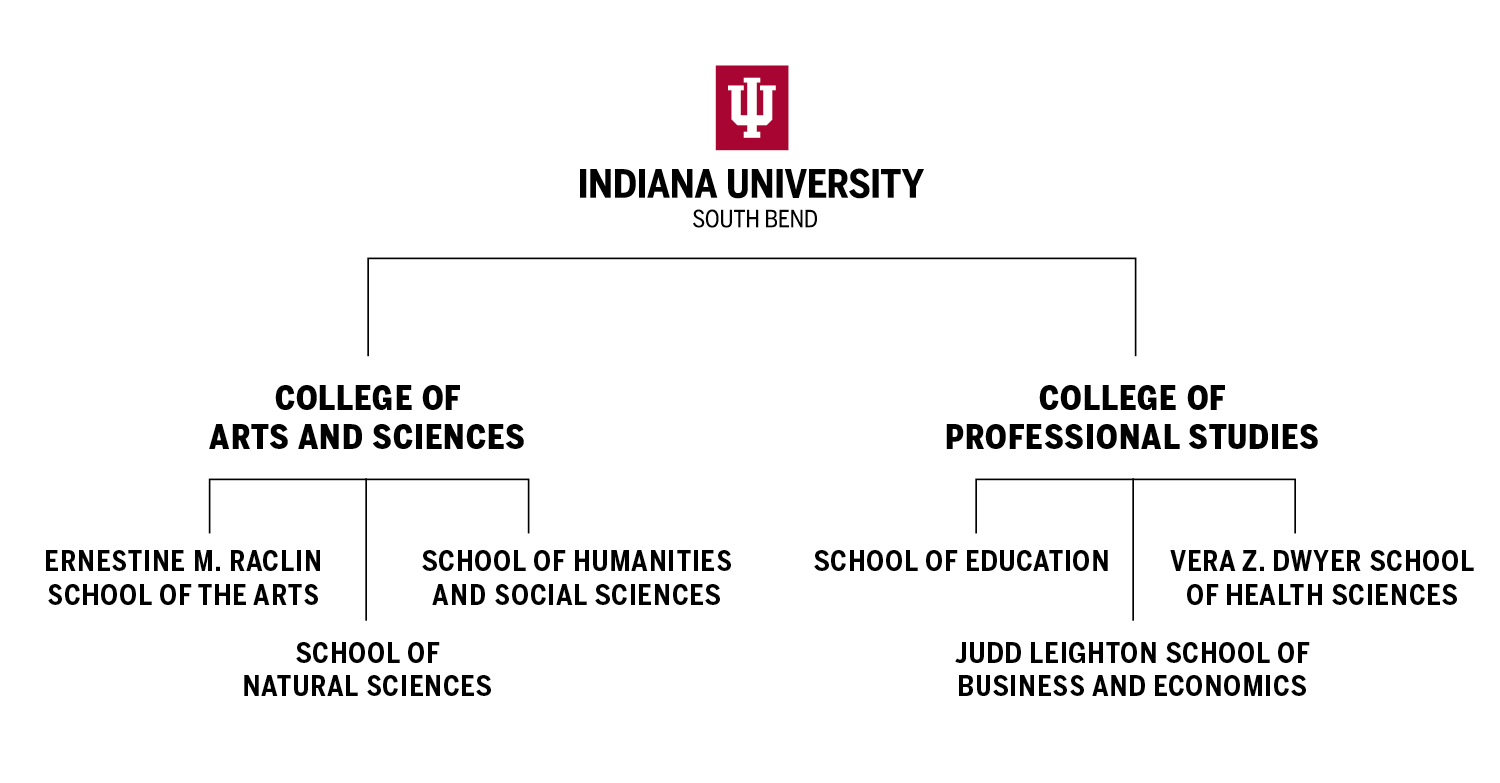College and school structure part of campus reorganization
IU South Bend is seeing a transformation which will help shape the campus as an education and community leader for decades to come.
As of July 1, IU South Bend has two colleges – the College of Arts and Sciences and the College of Professional Studies. While the administrative structure may look different, students on the South Bend campus will still have access to the same prestigious Indiana University degrees, recognized around the world and by employers everywhere.
The College of Professional Studies will consist of the Vera Z. Dwyer School of Health Sciences, the School of Education, and the Judd Leighton School of Business and Economics. The College of Arts and Sciences will consist of the School of Humanities and Social Sciences, the School of Natural Sciences, and the Ernestine M. Raclin School of the Arts.

The School of Social Work, a program housed through IU Indianapolis, will remain active alongside the two-college model.
“We are at an important moment in IU South Bend’s history. We have an opportunity to re-imagine our campus – how we collaborate and operate – to best serve our students and our region,” said Chancellor Susan Elrod.
The change is the culmination of a two-year effort. An Academic Organization Design (AOD) task force was formed during the 2022-23 academic year to identify potential models for review. In May 2023, the chancellor announced the new two-college structure, which was one of four models recommended by the task force. Since that time, a steering committee has been identifying work necessary for implementation of the new structure, monitoring that work, and communicating information to the campus community.
“This has been an opportunity for us to define a legacy for decades to come, not only re-imagining who we are, but how responsibly we use our resources to build a strong foundation for where we can go over the next 50 years,” Elrod said.
The change will allow the university structure to be nimbler in adapting to our region’s changing needs. The two-college structure will also allow each college to be more balanced in size.
“This is something that is happening at other institutions around the country and many of those institutions have not had the level of campus engagement we strived to include,” said Executive Vice Chancellor for Academic Affairs Jill Pearon.
The new structure will help streamline aspects of how the university functions, increase synergy among the colleges and schools, and result in savings.
“The goal is more organizational and administrative efficiency, which will give faculty more time to do what they do best – teaching and engaging in impactful research,” Pearon said.
Campus leaders are confident the streamlined model will create opportunities for increased collaboration within and across colleges, thanks to more cohesive organization and leadership teams.
Savings from efficiencies across campus could be used to fund innovative programs and priorities.


